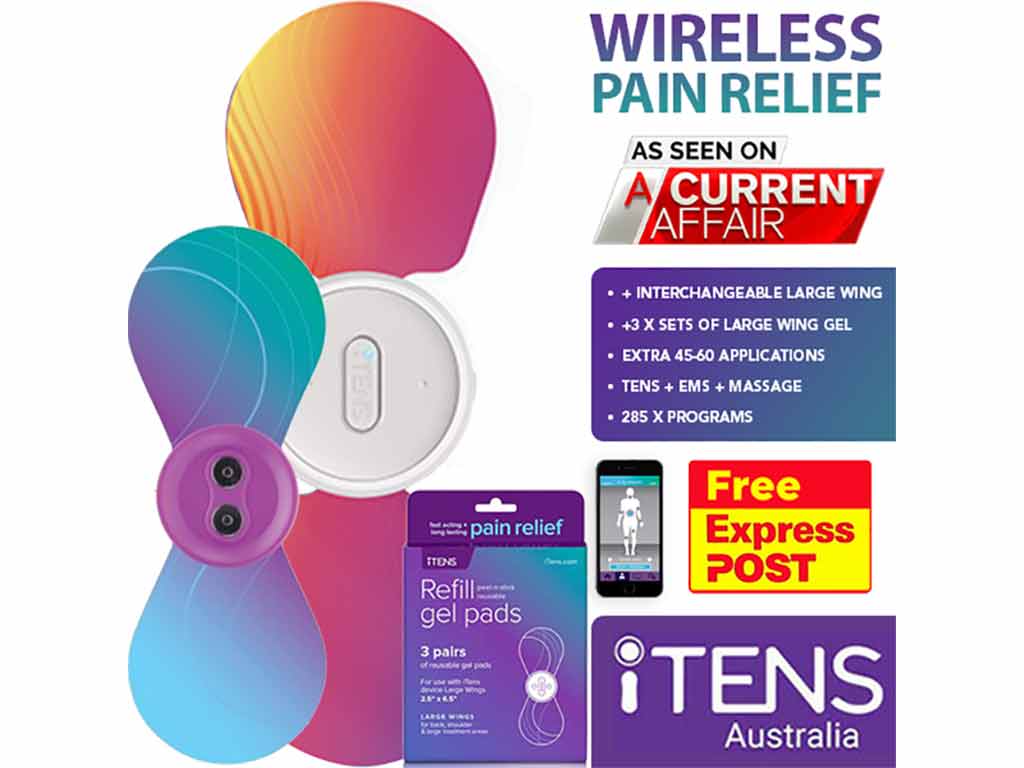
Osteoarthritis is a degenerative disease that causes joint pain, stiffness, and limited mobility. While there is no cure, various options are available to alleviate the aches. One of them is Transcutaneous Electrical Nerve Stimulation (TENS). It is an effective pain management for acute and chronic pain conditions, including osteoarthritis and other arthritic conditions. Using a TENS unit for osteoarthritis involves cleaning the skin, placing the electrodes, and adjusting the settings.
TENS therapy stands out as a non-invasive and drug-free option for pain management. It eliminates the need for incisions or injections. With TENS, individuals can experience relief without the necessity of consuming medications. This makes it especially beneficial for those looking to decrease or replace their reliance on pain medications. This article provides information about osteoarthritis, including the use of a TENS unit, instructions for operating the device, and safety precautions.
Understanding the Condition Before Using a TENS Unit for Osteoarthritis
Osteoarthritis is a condition that causes pain, stiffness, and swelling in the joints. Common symptoms include joint pain, tenderness, and reduced range of motion. Some people also experience a grating sensation when moving the affected joint. Osteoarthritis most commonly affects the knees, hips, and hands, and the symptoms usually worsen over time.
The main cause of osteoarthritis is the breakdown of cartilage in the joints. Factors such as ageing, joint injuries, obesity, and genetics can contribute to the development of osteoarthritis. Additionally, repetitive stress on the joints from certain activities or occupations can also increase the risk of developing the condition.
A TENS unit for osteoarthritis is a small, battery-operated device that delivers electric currents to the affected area. It can provide pain relief and improve mobility. People can program the settings according to their specific needs. This means they can adjust parameters such as pulse frequency, pulse duration, and electrical pulse intensity. These adjustments allow for personalisation to effectively target specific pain areas and achieve the best treatment outcomes.
How Does a TENS Therapy Work?
- Gate Control Theory of Pain: TENS works by overriding the nerves in the spinal cord that act as pain gate controllers. The electrical stimulation from TENS closes the “neural gates”, blocking the transmission of pain signals to the brain.
- Release of endorphins: the body produces more endorphins, the natural painkillers that help reduce pain and improve overall well-being. Endorphins bind to opioid receptors and inhibit them from sending pain messages.
- Boost blood circulation: the electrical currents or mild vibrations boost blood flow in the affected area. This helps to reduce inflammation, relax the muscles, and promote faster recovery of damaged tissues and nerve regeneration.

How to Operate a TENS Unit for Osteoarthritis
Operating a TENS unit for osteoarthritis is a straightforward process. Before starting, the user should check if the portable TENS device and accessories are in good condition. They should clean and dry the skin. They also have to read the instruction manual to increase their understanding of how to use their unit for osteoarthritis pain.
To begin, the user should position the electrode pads on muscle areas that are near the joints that are causing pain. Then, they can turn the machine on and adjust the settings. It is best to start on low levels to prevent any discomfort or potential electrical shocks. Afterwards, people may gradually increase the settings or select a preset mode.
TENS therapy sessions usually last between 20 to 30 minutes. This may vary depending on the settings used and medical conditions. Once the time elapses, they may turn the machine off and remove the electrodes. Furthermore, it is advisable to clean the pads after each use and store them properly.
Pad Placement Guide
People can place the electrodes around the joint area. it is important to start with clean and dry skin. This ensures that electrodes have good contact with the skin, allowing for better conduction of the electrical current. Individuals should clean the skin with mild soap and water and then thoroughly dry it.
Additionally, keep the electrodes a few inches apart to ensure the electrical current covers the painful area adequately. Avoid placing the pads directly over bony prominences or areas where nerves are close to the surface. Instead, it is best to position the electrodes on areas with more muscle tissue.

Precautions to Take When Using a TENS Unit for Osteoarthritis
It is vital to be aware of and follow the safety precautions when using a TENS unit for osteoarthritis. Although it is generally safe, improper use may lead to risks or side effects. Firstly, it is advisable to consult a healthcare professional before using the machine for pain management. This is because electrotherapy may not be suitable for those with heart problems, epilepsy, cognitive impairment, implanted devices, and pregnant women.
Secondly, keep the pulse frequency and intensity levels in a tolerable range. Avoid prolonged use or extreme settings to prevent damage to peripheral nerves and tissues. If the device causes discomfort, users may need to reduce the settings to a more comfortable level.
Additionally, avoid electrode placement on sensitive areas. This includes the spine, chest, throat, and head. Using the device in these regions may trigger irregular heart rates, seizures, and other risks. Also, avoid contact with broken skin, open wounds, or irritated skin. Lastly, do not use the device near water or while sleeping or driving.
Are There Any Side Effects?
There are some potential TENS machine side effects. For instance, skin irritation occurs when the electrode pads are not properly placed or when they are left on for too long. This can cause the skin to become red, itchy, or even develop a rash. Additionally, mild burns can happen when the electrical current is set too high.
In some cases, the electrical stimulation can cause muscles to contract or spasm, leading to discomfort or pain. This is more likely to occur if the TENS unit is set to high intensity or if the pads are placed too close together.
Conclusion
In conclusion, using a TENS unit for osteoarthritis involves simple steps for effective pain relief. Users must ensure the device is in good condition, place electrode pads correctly, and start with low settings. The typical session lasts 20 to 30 minutes, after which users should turn off the device, remove electrodes, and clean them. Regular use of the TENS unit can significantly alleviate arthritis pain, enhancing mobility and quality of life.
While a TENS machine can be an effective osteoarthritis pain relief method, it is important to use it safely. Users should consult healthcare professionals before starting, maintain moderate settings, and avoid sensitive areas and broken skin. Side effects like skin irritation or muscle spasms can occur, especially if the unit is used improperly. By following these precautions, individuals can minimise risks and safely incorporate TENS therapy into their pain management routine for osteoarthritis.




















